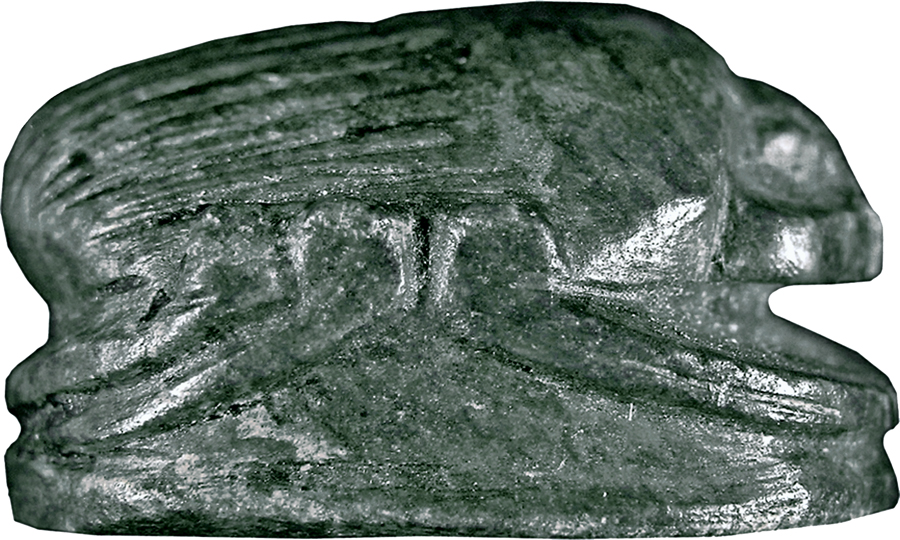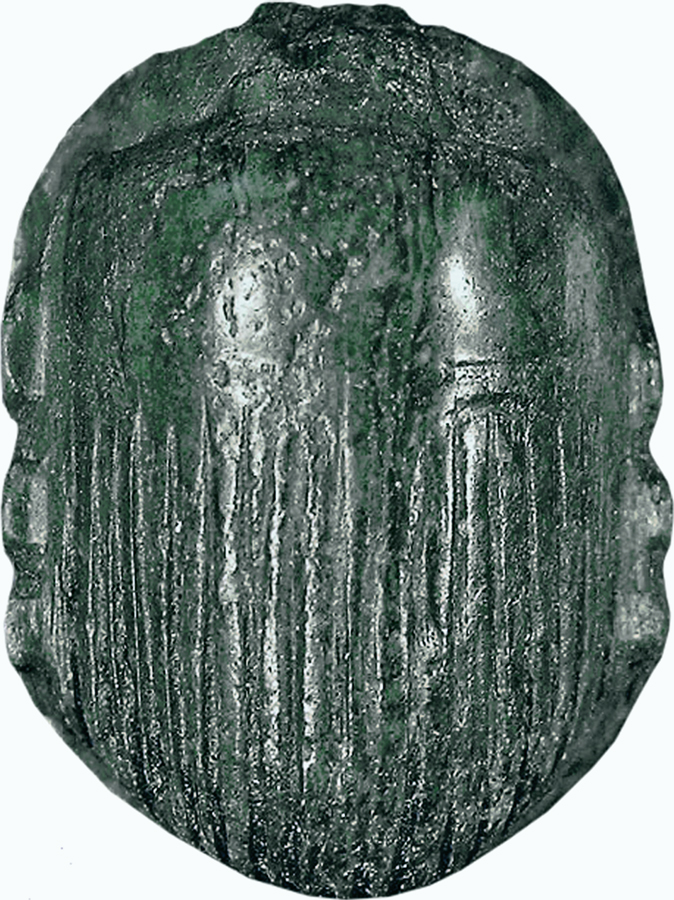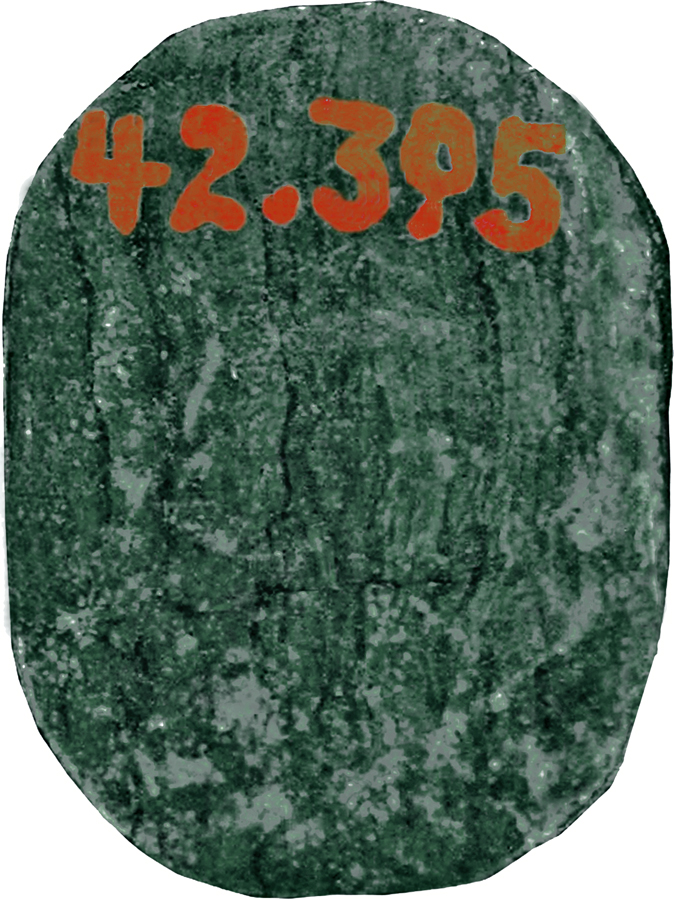Scarab
(Ancient Egypt and Nubia )
This serpentine scarab has a flat underside without any bottom design. The top has a design that is very detailed, with deeply incised hatch lines on the wing cases and slightly irregular line flow. The pattern is evenly spaced and tightly packed, the proportions of the top are slightly unbalanced, and the workmanship of the piece is good. It is carefully made.
The scarab functioned as a funerary amulet and had renewal connotations. The very high back of the scarab and its size makes it likely that it was produced as an inlay for a finger ring or as a small pectoral.
Provenance
Provenance (from the French provenir, 'to come from/forth') is the chronology of the ownership, custody, or location of a historical object. Learn more about provenance at the Walters.
Henry Walters, Baltimore, [date and mode of acquisition unknown]; Walters Art Museum, 1931, by bequest.
Geographies
Egypt (Place of Origin)
Measurements
H: 1/2 x W: 9/16 x L: 13/16 in. (1.2 x 1.5 x 2 cm)
Credit Line
Acquired by Henry Walters
Location in Museum
Not on view
Accession Number
In libraries, galleries, museums, and archives, an accession number is a unique identifier assigned to each object in the collection.
In libraries, galleries, museums, and archives, an accession number is a unique identifier assigned to each object in the collection.
42.395






